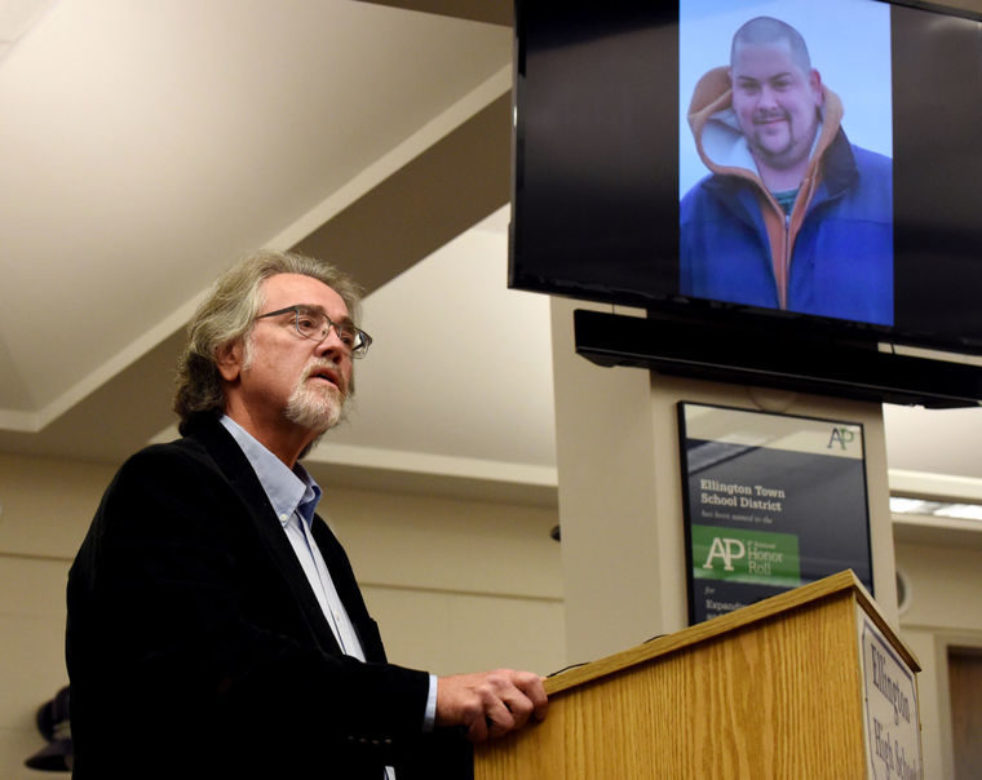We often hear the label “Enabler” used to describe a person whose behavior perpetuates or denies another’s addictive behaviors. This situation can allow the negative consequences of the other’s unhealthy behavior to continue. It is often said that this enabling softens the negative sequela of addiction and reduces the chances that the person in addiction will reach “Rock Bottom.” Consistent with this viewpoint is that a person in addiction will not change until they reach this conceptual state of “Rock Bottom” where they feel they can go no lower, now only left with the options of getting better or dying. This is believed to be the state of mind necessary for those with addiction to start the road to recovery. Inversely, anything that impedes that individual from reaching “Rock Bottom” only perpetuates or prolongs the unhealthy negative addictive behaviors.

Family members are often labeled as enablers when their behavior is seen to soften the negative consequences of addiction for their loved one. This often results in encouraging negative judgement about that family and further isolates them from support. Family members, especially parents, already feel enough guilt, blame, and responsibility, regarding their loved one’s addiction. Though I understand the concept of enabling as behavior that can interfere with the individual’s getting help for addiction, I believe that we need to reconsider how we use the terms ‘Rock Bottom’ and “Enabling” so that we can avoid further stigmatizing the person with addiction and their loved ones.
The concept of “Rock Bottom” is only useful as a way for a person, only retrospectively, to describe the point in their addiction where they realized they needed to reach out for help. That they had reached their personal “bottom” and were ready to work their way back out of the depths of addictive behaviors and consequences. “Rock Bottom,” however, is never a way to predict when a person will decide that they are ready to work on recovery. People in recovery describe a multitude of differing situations that they feel described their personal bottom. This situation differs from person to person and is highly specific and individualized. No one can look forward and state with certainty at which point they will reach their “Rock Bottom.” For some, as with my son Timothy, “Rock Bottom” was death by overdose. Waiting for this “bottom” to occur obviously leaves no room for recovery.
During Tim’s active addiction I remember an instance where his mother and I asked him to leave home. Tim had been living with us but the stress and frustrations related to his addictive behaviors, such as lying and stealing, were getting overwhelming. Tim spent the night in his car in our driveway. By next morning, our concern for the cold outside prompted us to allow Tim back into our home. We needed to find another way to deal with the ramifications of Tim’s addiction on our family. There were many who would judge us and believe that we were now “part of the problem.”
As with most human behavior, the explanation for our actions was much more complicated and nuanced. Tim was already struggling with his self esteem and felt as if he was a loser and a disappointment to his family. He had little ego strength or internal resources. We believed that keeping Tim at home would serve a few important factors. We could monitor his health, provide meals and a warm bed, demonstrate his worth to us, demonstrate our loving and compassion, and allow us to continually encourage and assist in his efforts to get into treatment and sustain his recovery. The ultimate harsh reality is that if Tim were to die from his disease we would rather it happen at home than under a bridge where he might not be discovered for some time.
Too often parents are judged for what others see as enabling. What others don’t understand is that parents’ options are limited and they are often desperate and without clearly defined pathways to help their loved one. Parents struggle with finding a balance between providing minimal necessities such as food and shelter, while knowing that they cannot and should not completely shield their loved ones from the consequences of addiction. While it is true that people will not often change behavior that they do not experience as problematic, addiction often leaves the individual feeling helpless and, even worse, hopeless. Even though my son, Tim, died as a result of his drug use, I will never regret that we tried to diminish his pain and suffering, at least with what was within our ability to accomplish. Tim was worth every ounce of effort that I could put forth, and I would do it again.
The bottom line is that we need not use the word “Enabler” as a term of judgement. It is useful only as a way of understanding that some behaviors well-meaning family members resort to, may not be helpful in that these behaviors absolve the individual with addiction problems from working to help themselves. There is much room however for loving family members to provide for essential needs and safety. As a society we have programs such as clean needle exchanges and clean injection sites that serve to keep people alive until they find the internal and external resources to start treatment for recovery. Helping an individual stay alive and reducing harm does not encourage their drug use, nor diminish their desire to get healthy. We would all do better to understand that no one likes to be addicted to drugs and helping them stay alive until they get better serves us all as a caring community. Families should not be judged harshly for trying anything and everything within their power that might save their loved one’s life. If we focus on compassion and support, fewer people will suffer in silence, and instead feel comfortable reaching out for help.

We need 2 form a hands on organization
That will let people suffering from opioid disease
Come together an make a change they need 2 feel excepted
In the community the organization would take on cpr classes cleaning the streets up
Helping out with cooking for homeless, housing, gardening ,painting creating new things helping an opening up doorways for people who feel they dont belong an helping them heal while given them support an given people the chance to take back there lives u take addiction an replace the addiction with positive things that distract the mind place them with empathetic people an push them through over comin fears an while doing hand on group activities 3 days out the week an being positive an groups but groups that take one outside the ROOM
You are so on target. Some individuals who struggle with addiction have told me that getting outside of their own head and volunteering in local groups for community causes has been a great healing tool for them.
Thank you for your powerful message. I needed this today.
My daughter was a brittle Type 1 diabetic. She didn’t have a problem with opioids. Yet, as her mother, I was judged harshly for not “making” her live alone, for not “making” her have better control of her diabetes. I was an “enabler” to those who had no standard of reference to the impact being brittle meant.
They did not understand what “brittle” means. Contrary to the definition of “uncontrolled diabetes”, a brittle is unable to control the swings from high to low. Their BGs can change due to many circumstances.
They applied the standards of a Type II diabetic to a brittle. They listened with thumbs in their ears and their mouths running wide open.
The critics never walked in our shoes. I did everything I could to help her. What I didn’t know was that she had an undiagnosed heart condition that caused an anoxic brain injury and eventually her death. Reviewing her previous tests showed the problem with her heart. She needed a defibrillator at least a year before her anoxic injury. The cardiologists missed it. Not much comfort to a grieving mom.
As a mom who lost the most precious person in her life almost eight years ago, I don’t need anyone else to kick me. I do enough of that myself.
God bless and thank you for this message.